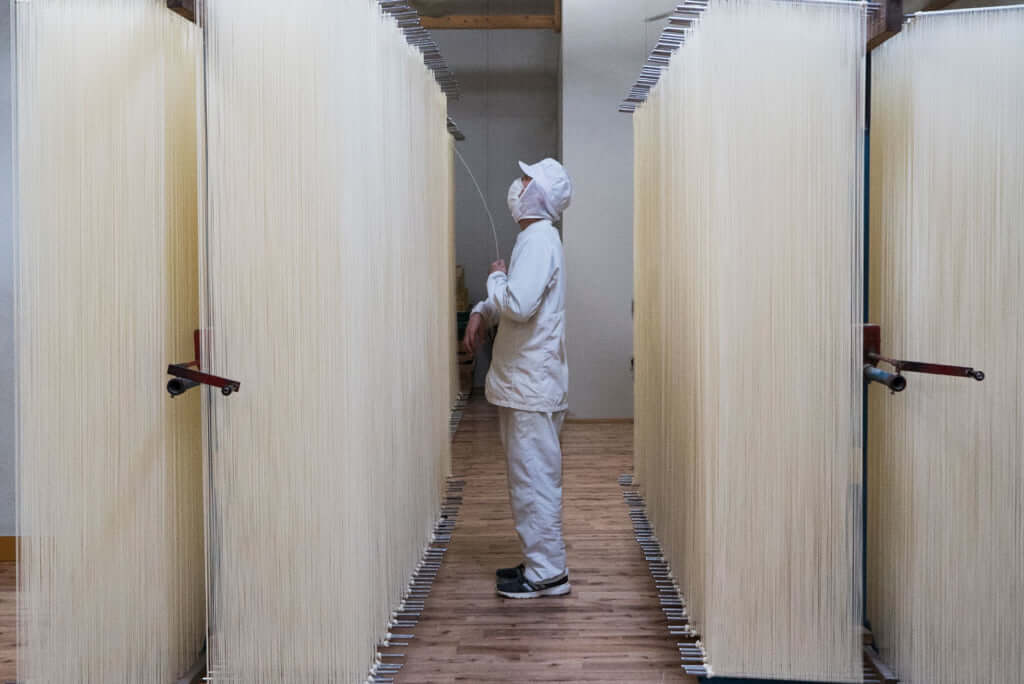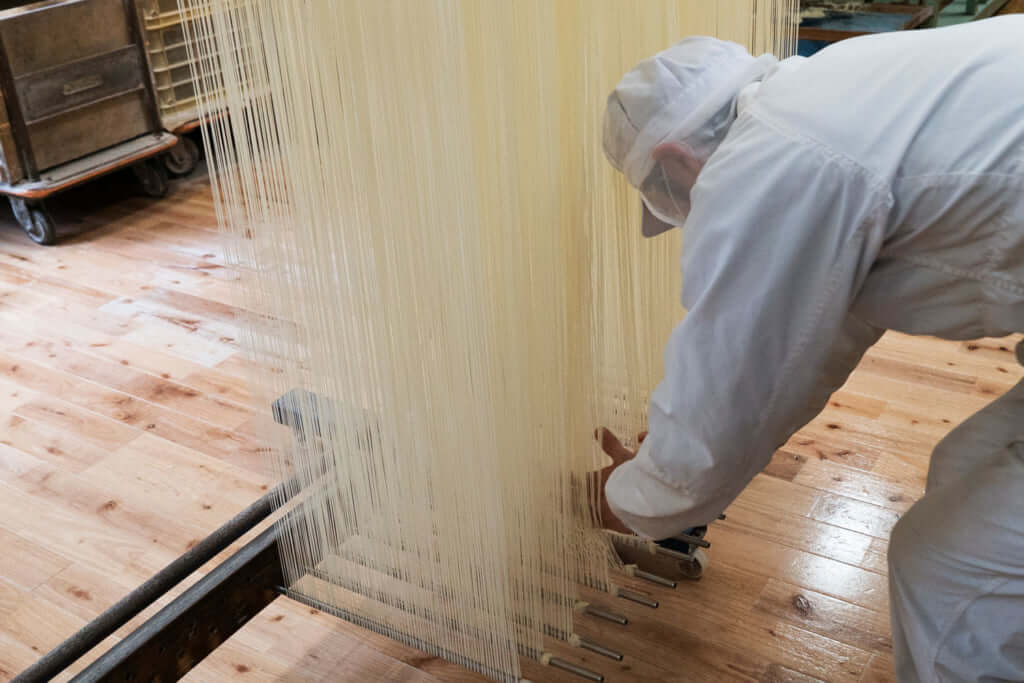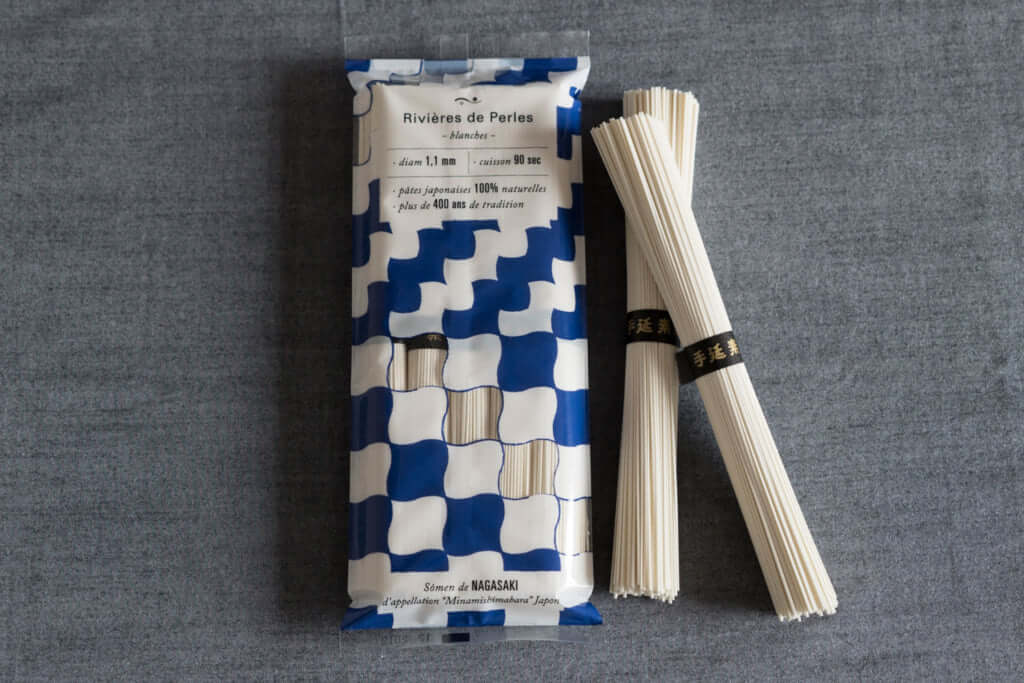Somen, the Versatile Noodle
Kyushu on the Table: Pairing Kyushu Specialties with French Cuisine #03
When one thinks of noodles, one’s mind usually goes to the tasty triumvirate: soba, udon, and ramen. However, a conversation about Japanese noodle culture would be amiss without including somen, which sadly is the only of these four noodles that spellcheck doesn’t recognise.
The sounds of the cicadas, the wind gently blowing bells, and the of slurping cold somen are the sounds of summer in Japan. Its texture, modestly firm and smooth, is the noodle’s charm. Soba, udon, and ramen require soup, but somen does well on its own.
Somen is a chameleon of sorts, as it blends beautifully with the food that surrounds it—if you appreciate its texture. It’s often used by French and Italian chefs. Sometimes they substitute it for capellini or use it as a soup ingredient. It finds a special place in rich soups such as pumpkin or mushroom potage.

Stretched and dried, the somen is often longer than the maker is tall.

Somen is carefully stretched by hand. The masters of this art know how to pay attention to the humidity and temperature and make adjustments to their noodles.
Nagasaki’s Minami-Shimabara City produces some of Japan’s favorite somen. Water determines the noodle’s texture more than anything, and the city’s subterranean river from Mt Unzen is the secret to the area’s tasty somen. Different locations along the river give the noodle different qualities. Minami-Shimabara’s specialty is an al dente noodle, so the somen maintains its firmness in both hot and cold soups. Maybe it’s time you explore your original recipe for somen.

Stretching the noodles carefully, the somen masters’ craft is seen in uniform noodles, and it’s a sight to behold. This is Shimabara-Tenobe Somen, which is made for the French market and comes in a distinctive blue package.
TRENDING
-
Yakumo Saryo: A Culinary Voyage in Tokyo
Shinichiro Ogata makes objects from glass, ceramics and bronze but is also a fantastic cook. Have a taste of both his talents at restaurant Yakumo Saryo.

-
WA BI GIN : (An Old) Affair of Passion
The Japanese distillery Hombo Shuzo, first known for their shoshu, decided to launch itself into artisanal production of gin. Thus, WA BI GIN was born.

-
Gome Pit, the Pop-Up Bar in a Waste Treatment Facility
Japan never ceases to surprise. Gome Pit is a pop-up bar with an unobstructed view over a pit where tonnes of waste are piled up before being incinerated.

-
A Japanese Tea Room Perched Atop a Rooftop
The building, in keeping with the minimalist style of its creator, offers a splendid view of Vancouver Bay and the surrounding mountains.

-
Discover Japanese Gastronomy Through The Solitary Gourmet Manga
This illustrated black and white album follows its lead through various bars, celebrating the Japanese art of living.





